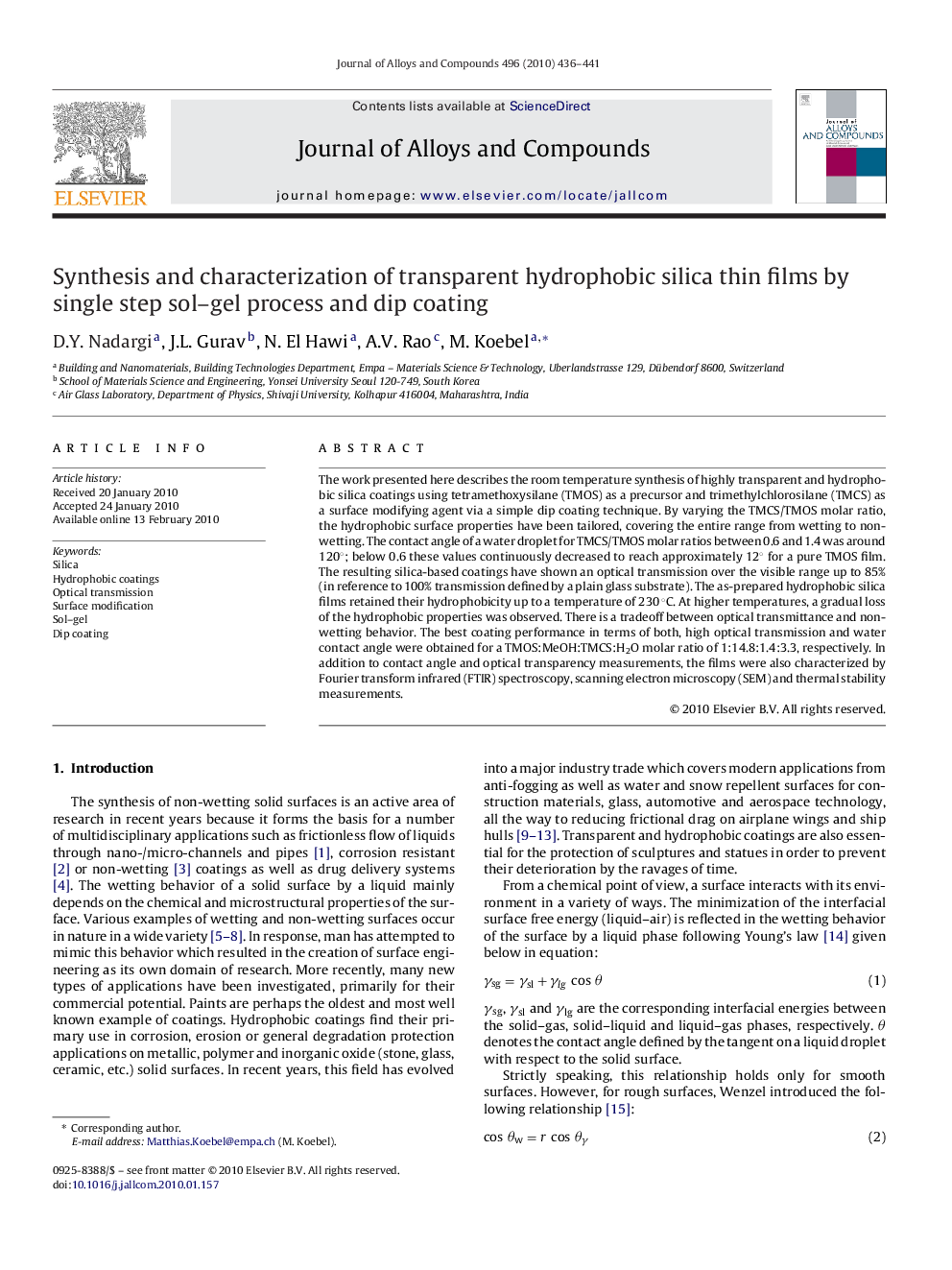| Article ID | Journal | Published Year | Pages | File Type |
|---|---|---|---|---|
| 1619125 | Journal of Alloys and Compounds | 2010 | 6 Pages |
The work presented here describes the room temperature synthesis of highly transparent and hydrophobic silica coatings using tetramethoxysilane (TMOS) as a precursor and trimethylchlorosilane (TMCS) as a surface modifying agent via a simple dip coating technique. By varying the TMCS/TMOS molar ratio, the hydrophobic surface properties have been tailored, covering the entire range from wetting to non-wetting. The contact angle of a water droplet for TMCS/TMOS molar ratios between 0.6 and 1.4 was around 120°; below 0.6 these values continuously decreased to reach approximately 12° for a pure TMOS film. The resulting silica-based coatings have shown an optical transmission over the visible range up to 85% (in reference to 100% transmission defined by a plain glass substrate). The as-prepared hydrophobic silica films retained their hydrophobicity up to a temperature of 230 °C. At higher temperatures, a gradual loss of the hydrophobic properties was observed. There is a tradeoff between optical transmittance and non-wetting behavior. The best coating performance in terms of both, high optical transmission and water contact angle were obtained for a TMOS:MeOH:TMCS:H2O molar ratio of 1:14.8:1.4:3.3, respectively. In addition to contact angle and optical transparency measurements, the films were also characterized by Fourier transform infrared (FTIR) spectroscopy, scanning electron microscopy (SEM) and thermal stability measurements.
